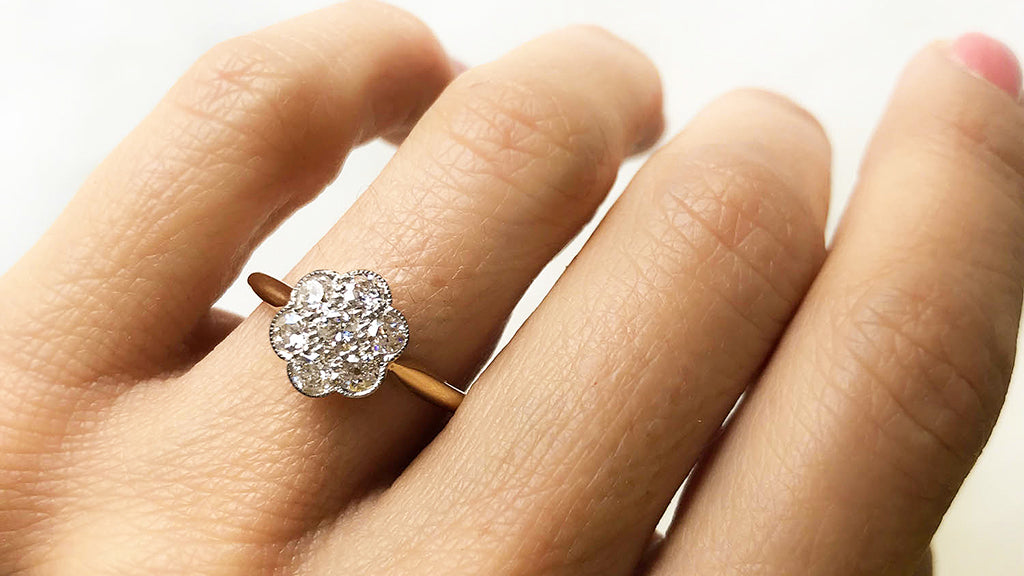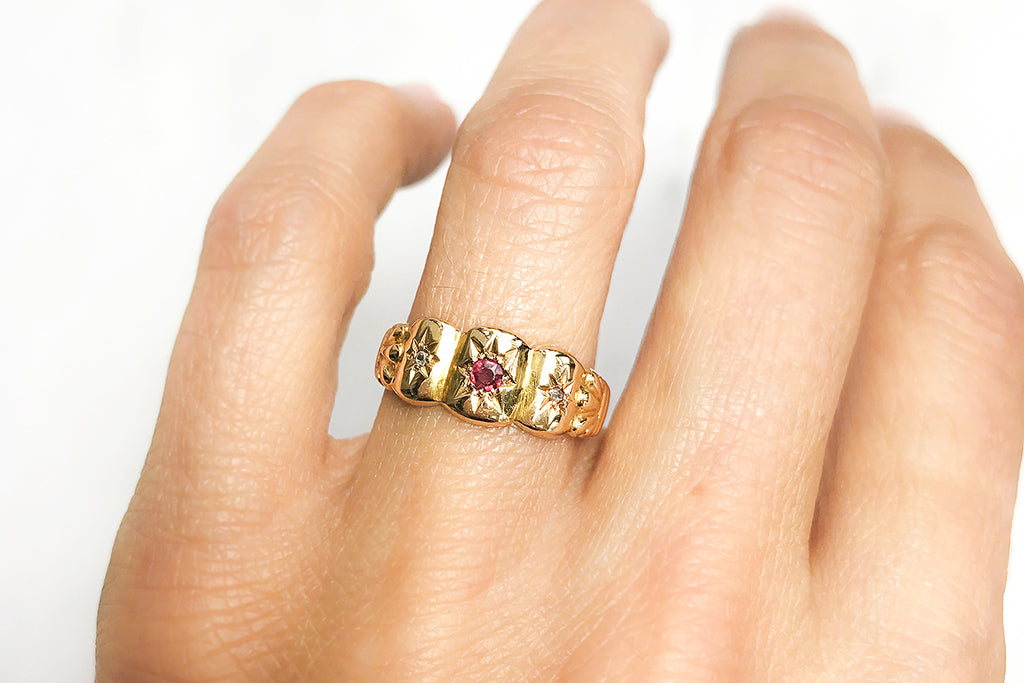
The Edwardian Daisy Ring: An Antique Design Classic
I have always had a thing for Edwardian daisy rings. Created during King Edward VII's brief time on the throne, the unique cluster design, with a centre stone encircled by diamond “petals”, is inherently feminine without being too girly. Encapsulating the delicate elegance of this very brief period of design history, the Edwardian daisy ring is one of those antique ring designs that it would be impossible to tire of.
A brief history of the daisy ring
Following the death of Queen Victoria, Edward VII took to the throne in 1901. The reign of this lovable rogue of a king might only have lasted 14 years, but this period in English history was one of great frivolity and wealth, ushering in a new, carefree attitude that was interpreted in the fashions of the time, which were crafted from much lighter and breezier fabrics than those of the Victorian era. This sense of airiness also made itself felt in the world of jewellery. Rather than piling on the jewels, as was popular with the Victorians, ethereal jewels were de rigueur among Edwardian women.

Platinum: a new metal to experiment with
The Edwardian era was one of great creativity. The arts flourished and jewellers experimented widely with platinum for the first time. Its strength and durability compared to gold enabled them to create more intricately detailed jewels, adding details such as millegrain - the tiny rows of platinum beads that can often be seen encircling the centre stone on Edwardian daisy rings. See our Constance ring for an example! This new focus on platinum started the “white on white” diamond jewellery trend that continued throughout the Art Deco years that followed.
King Edward VII’s wife, Queen Alexandra, was extremely fond of flowers. This fuelled the creation of jewels featuring floral motifs, including the cluster-style design that quickly became known as the daisy ring because of its resemblance to the classic wildflower with its rosette of white petals that is such a common sight across lawns in the UK. A simple representation of a flower, depicted in diamonds and sometimes precious gems, it was an instant hit.

The finishing touch: old-cut diamond petals
What I love most about Edwardian daisy rings is how restrained they are. Usually presented on a yellow gold band, the diamonds are set in platinum, accentuating their purity. Because diamonds from this era were not cut and polished using the kind of high-tech machinery used today, these “old cut” stones don’t sparkle like a modern-day round brilliant diamond. Shaped to look their best beneath candlelight, their subtle shimmer is central to the charm of an Edwardian daisy ring.
Add a colourful centre stone into the mix, preferably one that mimics nature, like the vibrant cornflower-blue sapphire in our Joyce engagement ring, and you have the perfect antique engagement ring – not flashy or dazzling, but very stylish and feminine. An Edwardian daisy ring isn’t trying too hard to be vintage, it just happens to be one of the most iconic ring designs from the Edwardian period. That, I think, is why this prettiest of designs has endured for so long.


